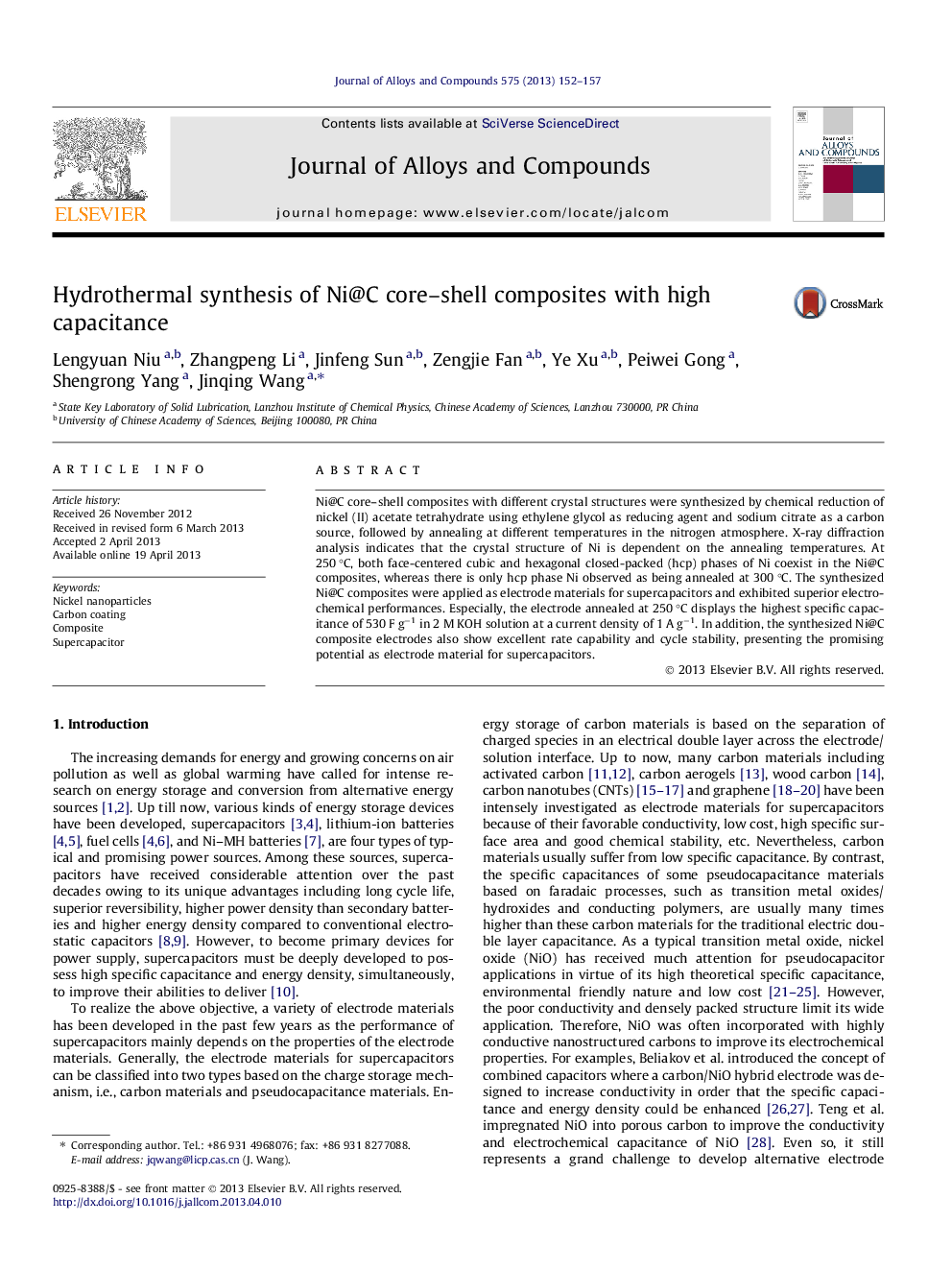| کد مقاله | کد نشریه | سال انتشار | مقاله انگلیسی | نسخه تمام متن |
|---|---|---|---|---|
| 1613477 | 1516318 | 2013 | 6 صفحه PDF | دانلود رایگان |

• Ni@C core–shell composites were prepared by a simple hydrothermal method.
• Ni@C composites exhibit good electrochemical performance for supercapacitors.
• The composite displays the highest specific capacitance of 530 F g−1 at 1 A g−1.
• An uniform carbon layer is very important for achieving a high electrochemical performance.
Ni@C core–shell composites with different crystal structures were synthesized by chemical reduction of nickel (II) acetate tetrahydrate using ethylene glycol as reducing agent and sodium citrate as a carbon source, followed by annealing at different temperatures in the nitrogen atmosphere. X-ray diffraction analysis indicates that the crystal structure of Ni is dependent on the annealing temperatures. At 250 °C, both face-centered cubic and hexagonal closed-packed (hcp) phases of Ni coexist in the Ni@C composites, whereas there is only hcp phase Ni observed as being annealed at 300 °C. The synthesized Ni@C composites were applied as electrode materials for supercapacitors and exhibited superior electrochemical performances. Especially, the electrode annealed at 250 °C displays the highest specific capacitance of 530 F g−1 in 2 M KOH solution at a current density of 1 A g−1. In addition, the synthesized Ni@C composite electrodes also show excellent rate capability and cycle stability, presenting the promising potential as electrode material for supercapacitors.
Journal: Journal of Alloys and Compounds - Volume 575, 25 October 2013, Pages 152–157